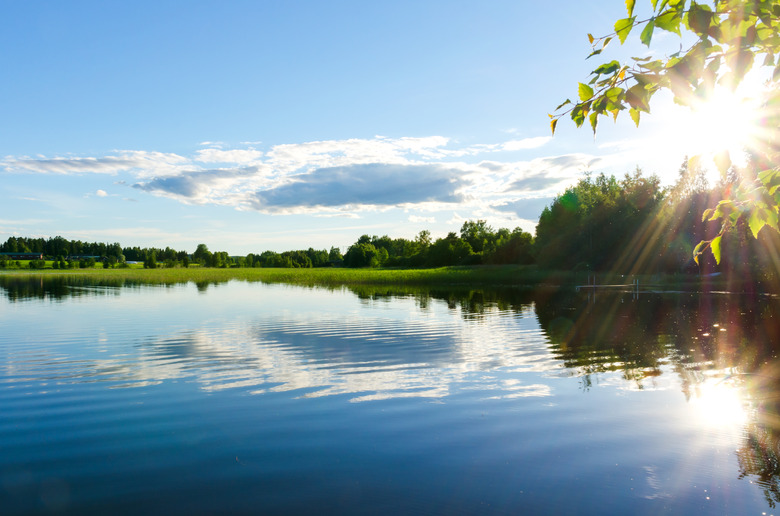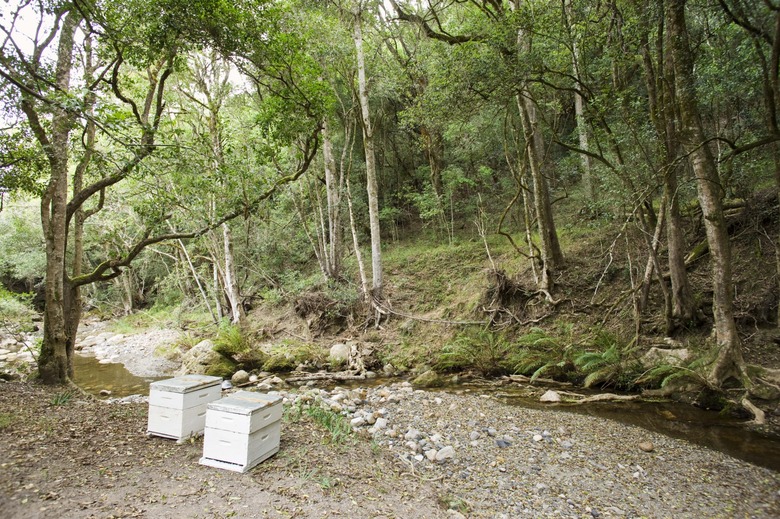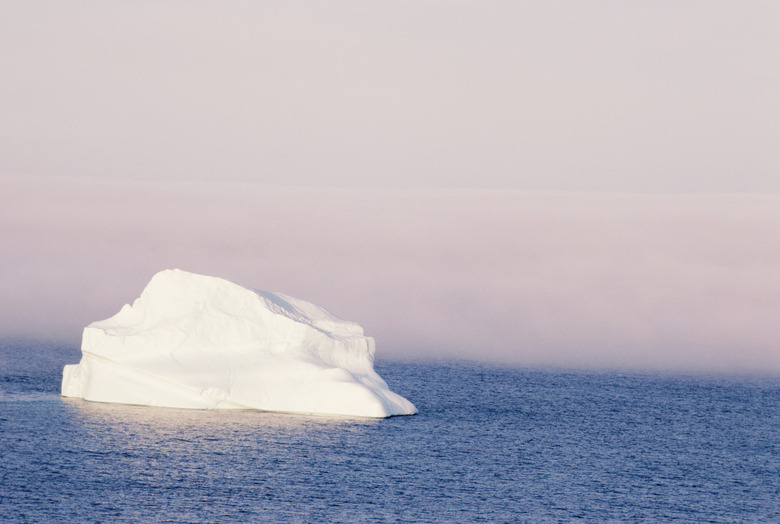Different Sources Of Water
Some sources of water are obvious, like lakes and rivers, while others, like glaciers, are a bit more removed from everyday experience. With so many people living near water, it sometimes seems unlikely that water shortages could be a serious problem. Understanding the sources of water available for human use reveals how limited freshwater actually is. Despite the overwhelming amount of water on earth, very little of it is suitable for consumption. New research and technology are currently seeking answers to this dilemma.
TL;DR (Too Long; Didn't Read)
In addition to visible sources of water like oceans and rivers, vast quantities of water are stored as groundwater and in polar ice.
Ground Water
Ground Water
Ground water refers to any source of water that lies beneath the soil layer. Ground water can exist in the soil itself or between rocks and other materials. Most communities obtain their water from underground aquifers, or rock formations capable of holding large amounts of freshwater. Only 3 percent of the water on earth is considered freshwater, with a mere 30 percent of that small amount being found as groundwater. Pollution, seawater contamination and overuse threaten this valuable resource.
Surface Water
Surface Water
Sources of surface water can include any above-ground collection of water such as rivers, lakes, ponds and oceans. Some sources of surface water are also fed by underground aquifers. Surface water accounts for 80 percent of the water humans use.
Ocean Water
Ocean Water
Although ocean water makes up nearly 97 percent of all water on earth, it is not a viable source of potable water unless salt and other impurities are removed. Desalination, the process by which salt is removed from water, is a rapidly growing practice. While salt and other microscopic particles can be removed from water in a variety of ways, the most promising method is through reverse osmosis. This process forces saltwater through filters with microscopic pores that remove salt and other microbes. Reverse osmosis requires large amounts of energy, making it a very expensive process.
Ice Caps and Glacial Melting
Ice Caps and Glacial Melting
Of the 3 percent of earth's water considered freshwater, 70 percent of that small amount is currently locked in glaciers and ice caps. In theory, frozen glacial and ice cap water could be melted and used, but the amount of energy needed to melt and transport vast quantities of ice make it economically impractical. Glaciers and ice caps also play vitally important roles in the regulation of earth's climates and global temperatures, making their preservation very important.
Cite This Article
MLA
Young, Kendra. "Different Sources Of Water" sciencing.com, https://www.sciencing.com/different-sources-water-7624072/. 19 April 2018.
APA
Young, Kendra. (2018, April 19). Different Sources Of Water. sciencing.com. Retrieved from https://www.sciencing.com/different-sources-water-7624072/
Chicago
Young, Kendra. Different Sources Of Water last modified March 24, 2022. https://www.sciencing.com/different-sources-water-7624072/



